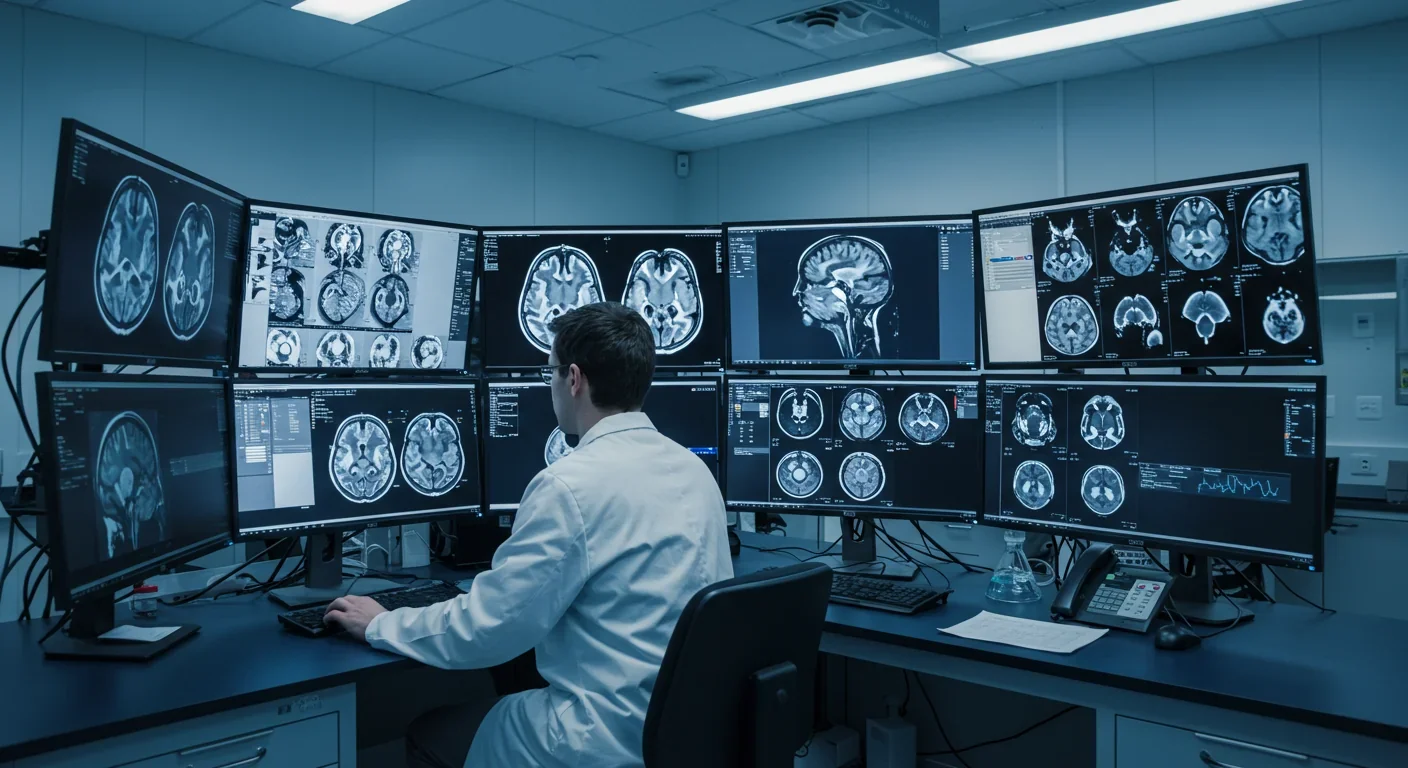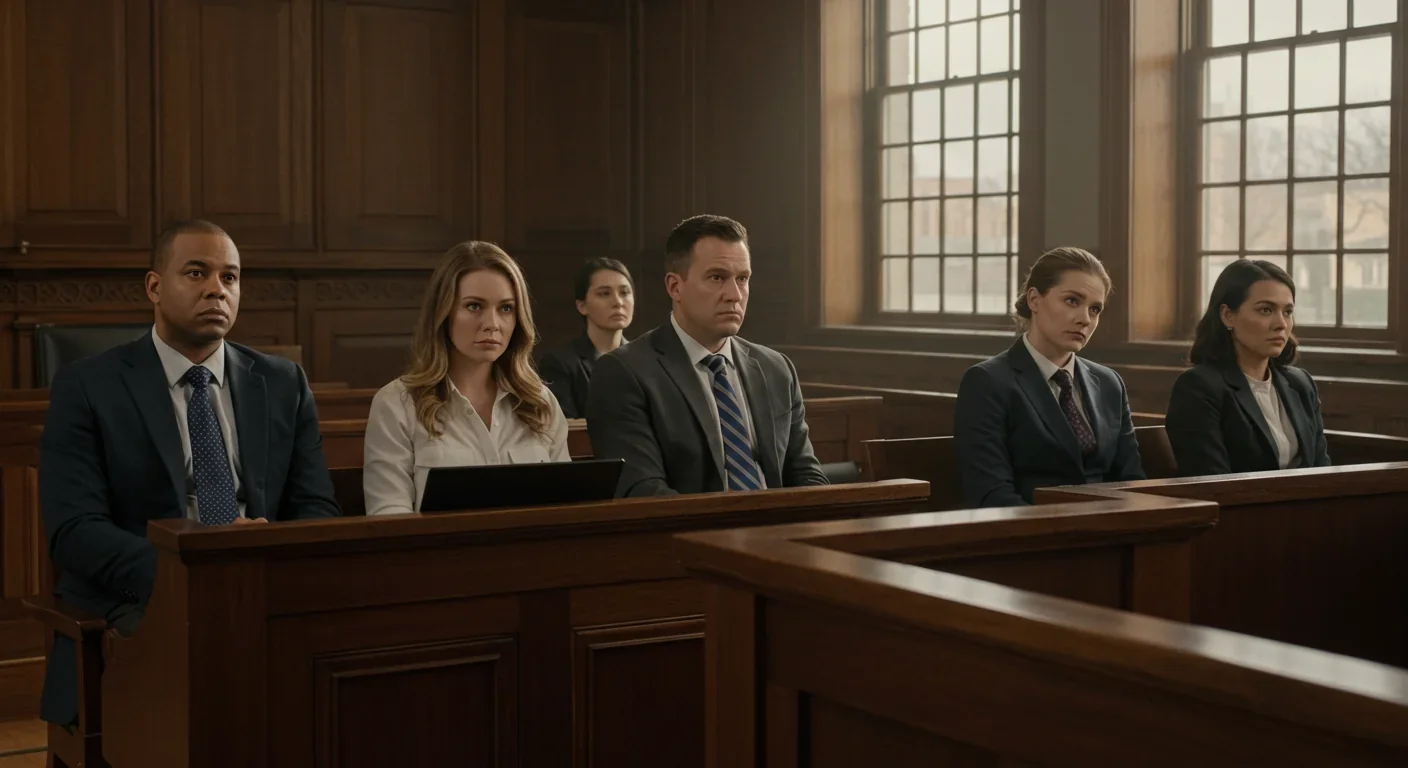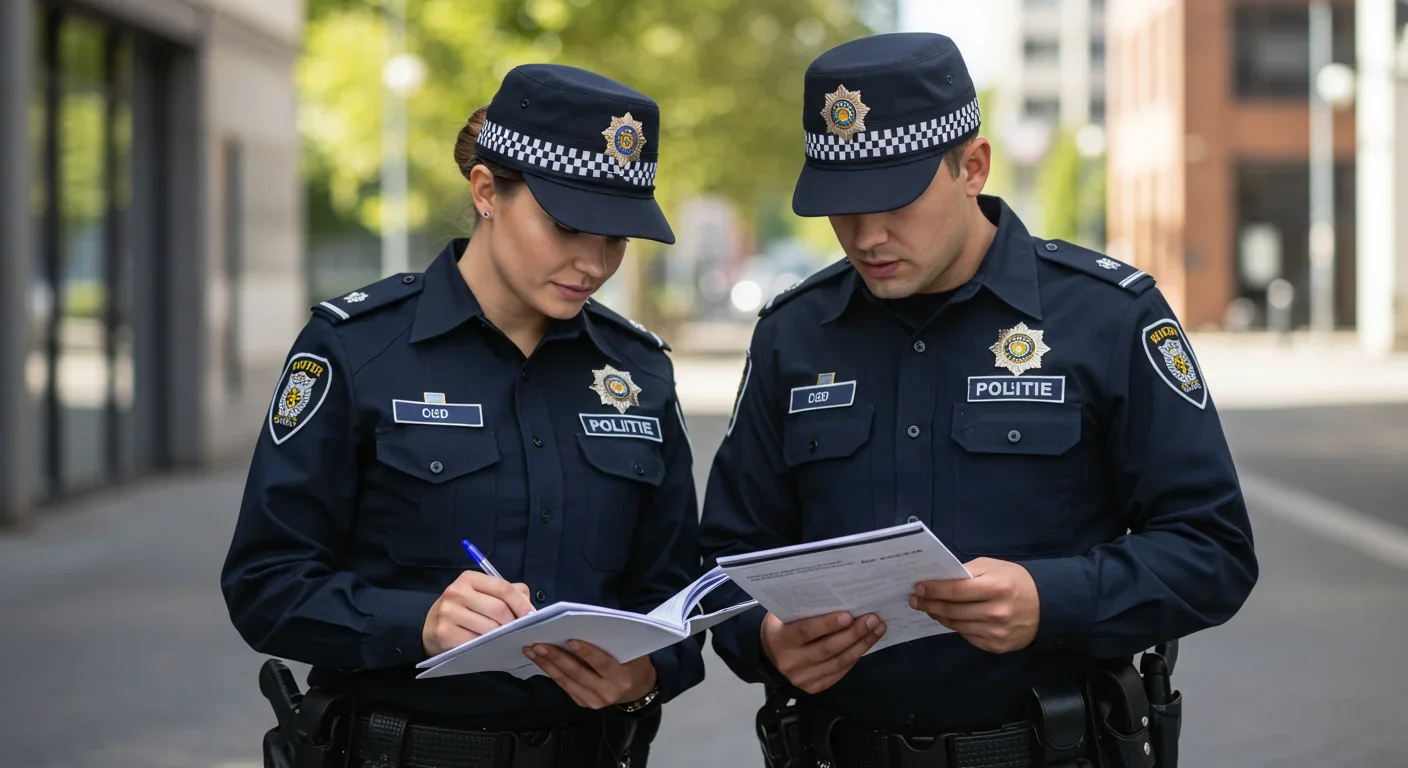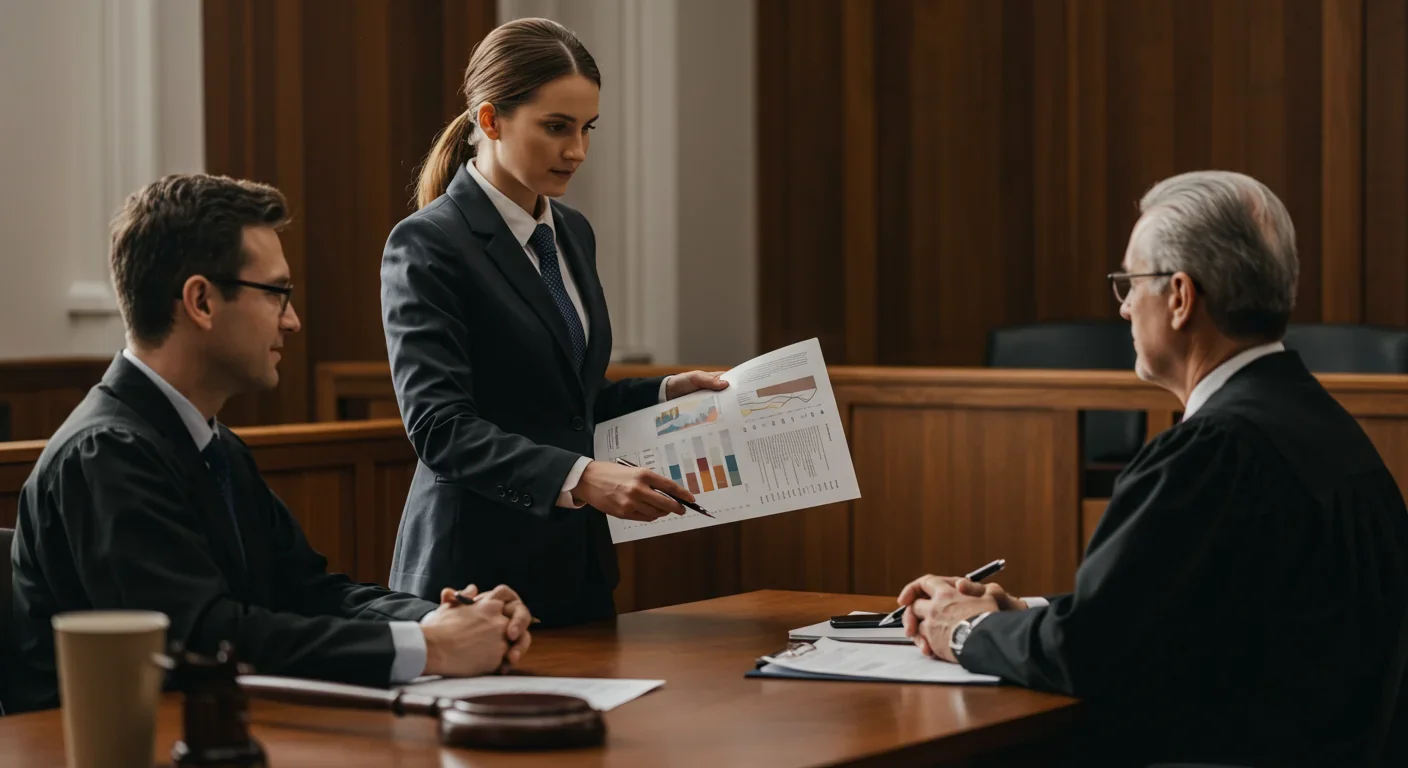Why Your Brain Is Hardwired to Lose Money

TL;DR: When witnesses see a weapon during a crime, their brains automatically fixate on the threat, leaving them unable to remember the perpetrator's face. This weapon focus effect is reshaping how courts evaluate eyewitness testimony and forcing the justice system to account for biological limits on memory.

Your attention is a spotlight, and when a gun appears, biology hijacks the controls. In those critical seconds when you should be cataloging a perpetrator's features, your visual focus is drawn—irresistibly—to the barrel of the weapon. Later, when investigators ask you to describe the robber's face, you'll find nothing but hazy outlines where sharp details should be. This isn't a failure of character or effort. It's a fundamental quirk of human cognition called the weapon focus effect, and it's reshaping how courts weigh eyewitness testimony.
The implications extend far beyond individual cases. Every year, thousands of criminal prosecutions rely on eyewitness identifications, yet the presence of a weapon systematically degrades the quality of that evidence. Understanding why this happens—and what we can do about it—matters for anyone who cares about justice.
Picture yourself behind a convenience store counter when someone walks in brandishing a knife. Your eyes lock onto the blade. You notice its length, the way light reflects off the steel, whether it's serrated. Meanwhile, the person holding it becomes peripheral information—a blur of clothing and indistinct features. Eye-tracking studies pioneered by psychologist Elizabeth Loftus revealed this pattern decades ago. When participants viewed simulated crime scenarios, their gaze fixated on weapons far more than on faces or other environmental details.
This attentional hijacking isn't random. Threatening stimuli activate ancient neural circuits designed to keep us alive. Your amygdala—an almond-shaped structure deep in your brain—acts as a threat detector, constantly scanning your environment for danger. When it identifies something potentially lethal, it triggers a cascade of neurological responses that narrow your focus onto the threat itself.
The very mechanism that helped our ancestors survive now undermines our ability to provide accurate testimony. You remember the weapon vividly but can't recall the wielder's face.
The result is paradoxical: the very mechanism that helped our ancestors survive now undermines our ability to provide accurate testimony. You remember the weapon vividly but can't recall the wielder's face well enough to pick them from a lineup.

The weapon focus effect emerges from how threat processing operates at the neural level. When your visual cortex processes a threatening object, signals race to your amygdala before you're even consciously aware of what you're seeing. The amygdala then broadcasts alarm signals throughout your brain, triggering the release of stress hormones like cortisol and adrenaline.
This threat response activates a network of brain regions including the insula, orbitofrontal cortex, and dorsal anterior cingulate cortex. These structures mediate automatic threat detection and—critically—make it difficult to disengage your attention from the dangerous stimulus. Research using fMRI brain imaging shows heightened activation in these areas when people view threatening images, correlating with how strongly their attention gets captured.
But there's another player in this neural drama: your dorsolateral prefrontal cortex, the brain region responsible for executive control. In everyday situations, this area helps you direct attention where you want it to go. Yet under threat, studies find that people with weaker prefrontal control show even larger weapon focus effects. Their "threat spotlight" becomes even harder to move.
Individual differences matter too. People with high trait anxiety show stronger attentional biases toward threatening stimuli in general, suggesting they may be especially susceptible to weapon focus. Your baseline stress level, emotional regulation strategies, and even genetic variations in threat-processing systems can influence how dramatically a weapon captures your attention.
Controlled experiments have quantified weapon focus with disturbing precision. In typical laboratory studies, researchers show participants staged crime scenarios—half with a weapon present, half without. Consistently, participants who viewed the armed scenario perform significantly worse at identifying the perpetrator's face afterward. Recognition accuracy drops by anywhere from 10 to 30 percentage points when a weapon is visible, depending on the study's specific conditions.
The effect strengthens under certain circumstances. Higher-threat weapons (guns versus hammers) produce larger impairments. Greater perceived danger intensifies attentional capture. Shorter exposure times leave less opportunity for attention to shift back to other details. And critically, the effect persists even when witnesses know they should be paying attention to the perpetrator's face.
"Recognition accuracy drops by anywhere from 10 to 30 percentage points when a weapon is visible during a crime."
— Laboratory research on weapon focus effect

Different threat types don't produce identical effects. Research comparing reactions to various threatening stimuli—snakes, blood-injury images, weapons—reveals that different threats engage somewhat different neural pathways. Phylogenetic threats (things that menaced our evolutionary ancestors, like snakes) activate different brain regions than ontogenetic threats (modern dangers like guns). This suggests weapon focus specifically may involve learned associations about what constitutes a lethal modern threat, layered atop more ancient threat-detection mechanisms.
Real-world data supports these lab findings. Analyses of actual criminal cases show that eyewitnesses to armed crimes provide less accurate descriptions and make more identification errors than witnesses to unarmed offenses. When defense attorneys raise weapon focus in court, they're citing a phenomenon with solid empirical backing.
The legal implications are profound. For decades, courts treated eyewitness testimony as gold-standard evidence, often giving it more weight than forensic findings. A confident witness pointing at a defendant could seal a conviction. But psychological research—including weapon focus studies—has forced a reckoning.
In 2014, the National Academy of Sciences published a comprehensive report on eyewitness identification, highlighting weapon focus among multiple factors that compromise memory reliability. The report recommended that courts provide jury instructions explaining these cognitive limitations. Since then, many jurisdictions have adopted such instructions, helping jurors understand that a sincere, confident eyewitness might still be mistaken.
Expert testimony from psychologists is now more commonly admitted in cases involving eyewitness identification. These experts explain to juries how weapon focus works, often using visual demonstrations or eye-tracking evidence to illustrate how attention operates during traumatic events. Defense attorneys increasingly raise weapon focus as grounds to challenge identifications, especially when the witness had only seconds to observe the perpetrator while a weapon was visible.
New Jersey's State v. Henderson decision created a framework explicitly considering weapon focus alongside factors like lighting, distance, and stress when evaluating eyewitness evidence.
Some courts have gone further, establishing guidelines for when eyewitness testimony should be admitted at all. New Jersey's State v. Henderson decision in 2011 created a framework for evaluating eyewitness evidence that explicitly considers weapon focus alongside factors like lighting, distance, and stress. Other states have followed suit, requiring judges to assess whether specific circumstances—including weapon presence—make an identification too unreliable to present to a jury.
Prosecutors, meanwhile, must now think strategically about cases that hinge on eyewitness identification. When a weapon was present, they seek corroborating evidence—surveillance footage, forensic findings, additional witnesses—to bolster their case. A lone eyewitness who saw a gun-wielding robber for five seconds is no longer sufficient for confident prosecution in many jurisdictions.

Law enforcement agencies have responded by revising how they collect eyewitness evidence. The cognitive interview technique, now widely adopted, helps witnesses retrieve more complete memories by recreating the context of the event and encouraging recall from multiple perspectives. Interviewers trained in this method know to ask specifically about peripheral details that witnesses might have encoded even if they didn't consciously notice them.
Some departments train officers to recognize weapon focus when taking initial reports. If a witness says "I can still see that gun perfectly but the face is fuzzy," investigators know they're dealing with a predictable cognitive limitation, not a dishonest or inattentive person. This understanding helps them probe for whatever details were encoded and avoid leading questions that could contaminate memory.
Research into whether we can train people to resist weapon focus shows mixed results. Some studies suggest that warning about the effect beforehand doesn't eliminate it—knowing your attention will be captured doesn't give you the executive control to prevent it. However, certain high-stress professions may develop some resilience through repeated exposure and training.
Police officers and soldiers who regularly train in scenarios involving weapons sometimes show reduced weapon focus effects compared to civilians. Whether this reflects learned attentional control, desensitization to threat, or simply greater familiarity with weapons remains debated. What's clear is that brief interventions won't override deep-seated threat responses—you can't willpower your amygdala into silence.
Emerging approaches focus on post-event interventions rather than attempting to change attention during the crime itself. Techniques like context reinstatement, guided visualization, and careful questioning protocols can help witnesses access whatever details they did encode, even if those details are sparser than in weapon-absent scenarios. The goal isn't to eliminate weapon focus but to optimize recall given its inevitable occurrence.
Not everyone experiences weapon focus identically. Individual variation in attentional control predicts how strongly the effect manifests. People who score higher on measures of executive attention—those better at maintaining focus on a task despite distractions—show somewhat smaller weapon focus effects. Their prefrontal cortex exerts stronger top-down control over the bottom-up threat signals from the amygdala.
Anxiety levels play a role too. Individuals with higher trait anxiety already show attentional biases toward threatening stimuli in neutral contexts. When an actual weapon appears, their attention locks on even more strongly. Conversely, people with extensive threat exposure in their personal or professional history may show blunted responses—their threat-detection systems have recalibrated through repeated experience.
"People who score higher on measures of executive attention show somewhat smaller weapon focus effects. Their prefrontal cortex exerts stronger control over threat signals."
— Cognitive neuroscience research
Age influences weapon focus in complex ways. Older adults sometimes show larger effects, possibly because age-related declines in executive function reduce their ability to redirect attention away from salient stimuli. Children's responses vary depending on developmental stage, with younger children sometimes showing less weapon focus because their threat-detection systems haven't fully matured.
Cultural context matters as well. In societies where weapon exposure is more common, the novelty component of weapon focus may diminish. Someone who has never encountered a firearm in person might experience a stronger initial shock response than someone from a context where weapons are routine. However, even in high-weapon-exposure populations, the threat signal still triggers attentional capture—it's the magnitude that varies, not the fundamental effect.
Emotional regulation strategies influence outcomes too. Research shows that people who habitually use adaptive emotion regulation—reappraising threatening situations or maintaining cognitive distance—can partially buffer against attentional capture. Those who tend toward suppression or rumination show stronger threat-related attention effects. This suggests that long-term patterns of emotional coping shape how your attention responds in acute crises.
Understanding these individual differences has practical implications. A high-anxiety witness who got only a brief glimpse of an armed robber's face represents a particularly challenging identification scenario. An experienced security guard who saw the same crime might provide more reliable facial details despite weapon presence. Context always matters.

The weapon focus effect intersects with other memory distortions that plague eyewitness testimony. Stress impairs memory encoding—the very circumstances that produce weapon focus also trigger cortisol release that interferes with hippocampal function. Cross-race identification challenges compound the problem when a witness saw a perpetrator of a different race while a weapon was present.
Post-event information can further contaminate memory. If a witness initially provides only a vague description but then sees a suspect's photo in the news, they might unconsciously incorporate that image into their memory of the crime. Weapon focus makes this more likely because the original facial memory was so impoverished—there's more empty space for false details to fill.
Wrongful conviction cases frequently feature eyewitness misidentifications, and weapon presence appears in many such scenarios. DNA exoneration data shows that mistaken identifications contributed to roughly 70% of wrongful convictions, and an unknown proportion of those involved armed crimes where weapon focus likely degraded memory quality.
DNA exoneration data shows that mistaken identifications contributed to roughly 70% of wrongful convictions. Many involved armed crimes where weapon focus likely degraded memory quality.
This doesn't mean eyewitness testimony is worthless. Rather, it must be weighed carefully against other evidence, with full awareness of its limitations. A witness who observed someone for minutes in good lighting before a weapon appeared provides different-quality evidence than someone who glimpsed a gun-wielding robber for five seconds in dim light. Courts are increasingly sophisticated about these distinctions.
The tension between psychological science and legal practice persists. The adversarial system incentivizes prosecutors to present their strongest case and defense attorneys to attack weaknesses. Weapon focus sits at this intersection—a scientifically validated phenomenon that defense teams invoke and prosecutors sometimes downplay. Jurors must navigate competing narratives about memory reliability, often without the scientific background to fully evaluate the claims.
Modern tools offer new ways to assess and explain weapon focus. Eye-tracking technology can demonstrate in court exactly how attention operates during threatening scenarios. Researchers have created video demonstrations showing how a person's gaze fixates on a weapon while peripheral details remain unobserved. These visual aids help jurors understand an abstract cognitive principle.
Virtual reality simulations now allow researchers to study weapon focus in more realistic scenarios than static images permit. Participants navigate three-dimensional crime scenes, and eye-tracking headsets record where they look in real time. This technology reveals nuances—like how weapon visibility duration affects the magnitude of memory impairment—that traditional methods miss.
Brain imaging advances continue to refine our understanding of the neural mechanisms. Recent work has started to map individual differences in amygdala connectivity that predict threat responsiveness. As this research progresses, we may eventually identify biomarkers indicating who is most susceptible to weapon focus effects.
Artificial intelligence and machine learning are being applied to analyze police interview transcripts, identifying linguistic patterns that suggest when weapon focus has occurred. If a witness provides extremely detailed weapon descriptions but vague facial details, algorithms can flag this for investigators. While such tools remain experimental, they point toward a future where psychological insights are systematically incorporated into evidence evaluation.
The weapon focus effect exemplifies how psychological research can transform legal practice. What began as a laboratory curiosity has become a standard consideration in criminal cases involving eyewitness identification. Courts that once dismissed psychological testimony as "soft science" now routinely admit experts explaining cognitive limitations.
Looking ahead, several developments could further improve how the justice system handles this issue. Standardized jury instructions about weapon focus are spreading but remain inconsistent across jurisdictions. Creating uniform, research-based language would ensure that all jurors receive accurate information about memory limitations.
Body-worn cameras and surveillance systems increasingly capture crimes as they unfold, reducing reliance on memory alone. When video exists, investigators can verify eyewitness accounts rather than depending entirely on recall. This technology doesn't eliminate the need for witness testimony but provides an objective check on its accuracy.
Training for investigators continues to evolve. Teaching officers about weapon focus, cross-race effects, and other research-backed phenomena helps them conduct better interviews and recognize when identifications may be unreliable. Some departments now require continuing education in eyewitness science for detectives.
Research itself must continue. While we understand the basic contours of weapon focus, many questions remain. How do different weapon types compare? What interview techniques best recover peripheral memories from weapon-present crimes? Can targeted attention training reduce the effect for high-risk professionals like security guards? Answering these questions will further refine legal practice.
If you ever witness a crime, knowing about weapon focus won't let you override it—but understanding the phenomenon helps you recognize your memory's limitations. If a weapon was present, acknowledge that your facial recall may be impaired. Don't let investigators pressure you into false certainty about details you didn't clearly observe.
For those serving on juries, remember that a confident eyewitness isn't necessarily an accurate one. Confidence and accuracy often diverge, especially under the stressful, weapon-present conditions where memory encoding suffers most. Weight eyewitness testimony appropriately, considering all the factors that influence reliability.
If you work in law enforcement, legal defense, or prosecution, staying current with cognitive science research isn't optional—it's essential for doing your job ethically. The gap between what psychologists know about memory and how the legal system often operates remains too wide.
More broadly, weapon focus reminds us how evolution has shaped our minds in ways that don't always serve modern needs. The same neural circuits that kept our ancestors alive by forcing attention toward predators now compromise our ability to provide accurate testimony. We're biological creatures navigating a world that increasingly demands more than biology alone can provide.
The weapon focus effect has already changed how thousands of cases are investigated and prosecuted. As the research base grows and legal reforms spread, its impact will only deepen. We're moving toward a justice system that acknowledges human cognitive limitations rather than pretending they don't exist.
This evolution isn't about discarding eyewitness testimony—it's about using it wisely. Memory remains valuable evidence, but it must be treated as fallible and context-dependent. When courts and investigators account for weapon focus and other research-backed phenomena, they make better decisions. When they ignore the science, they risk convicting the innocent and freeing the guilty.
The next time you see news coverage of a crime where witnesses couldn't identify the perpetrator despite being present during the offense, you'll understand why. Their brains were following ancient programming—attending to the threat, not the threatener. It's not a character flaw. It's not incompetence. It's biology intersecting with the demands of modern justice, and understanding that intersection makes all of us better equipped to navigate the space where memory and law collide.

MOND proposes gravity changes at low accelerations, explaining galaxy rotation without dark matter. While it predicts thousands of galaxies correctly, it struggles with clusters and cosmology, keeping the dark matter debate alive.

Ultrafine pollution particles smaller than 100 nanometers can bypass the blood-brain barrier through the olfactory nerve and bloodstream, depositing in brain tissue where they trigger neuroinflammation linked to dementia and neurological disorders, yet remain completely unregulated by current air quality standards.

CAES stores excess renewable energy by compressing air in underground caverns, then releases it through turbines during peak demand. New advanced adiabatic systems achieve 70%+ efficiency, making this decades-old technology suddenly competitive for long-duration grid storage.

Our brains are hardwired to see patterns in randomness, causing the gambler's fallacy—the mistaken belief that past random events influence future probabilities. This cognitive bias costs people millions in casinos, investments, and daily decisions.

Forests operate as synchronized living systems with molecular clocks that coordinate metabolism from individual cells to entire ecosystems, creating rhythmic patterns that affect global carbon cycles and climate feedback loops.

Generation Z is the first cohort to come of age amid a polycrisis - interconnected global failures spanning climate, economy, democracy, and health. This cascading reality is fundamentally reshaping how young people think, plan their lives, and organize for change.

Zero-trust security eliminates implicit network trust by requiring continuous verification of every access request. Organizations are rapidly adopting this architecture to address cloud computing, remote work, and sophisticated threats that rendered perimeter defenses obsolete.